Design of portable meteorological instrument based on MSP430 single chip microcomputer
Portable Meteorological Instrument Based on MSP430F149 MCU
A low-power, compact meteorological instrument has been designed to measure key environmental parameters such as temperature, humidity, air pressure, wind speed, and wind direction. This device is centered around the low-power MSP430F149 microcontroller, which controls all measurement modules. The system uses various sensors—temperature, humidity, barometric, wind speed, and wind direction—to collect data. Real-time data is displayed using a 12864 LCD with a clock module, while E2PROM ensures data storage and retrieval. The design emphasizes portability, miniaturization, and energy efficiency, making it ideal for localized climate monitoring applications.
0. Introduction
Meteorological measurements like temperature, humidity, air pressure, wind speed, and wind direction are essential in agriculture, industry, navigation, and daily life. However, traditional weather forecasts often lack precision for small areas, and building dedicated weather stations is costly. To address this, a portable, low-power meteorological instrument was developed. It offers accurate, real-time measurements of atmospheric conditions, supports data storage and query, and is suitable for use in remote or small-scale environments. Its low cost and high stability make it a practical solution for local meteorological monitoring.
1. System Design and Working Principle
The system, as shown in Figure 1, uses the MSP430F149 microcontroller as its core. It integrates modules for temperature, humidity, air pressure, wind speed, wind direction, a real-time clock, and E2PROM. Sensors convert environmental data into electrical signals, which are processed by the microcontroller. The LCD displays current readings, while E2PROM stores historical data. Users can manually store or query data using buttons, and the system can also automatically record measurements hourly. This ensures reliable and continuous monitoring in the field.
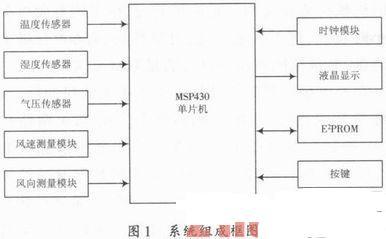
2. Hardware Design
2.1 Overview of MSP430
The MSP430 series from Texas Instruments is known for its ultra-low power consumption and versatility. With five power modes, including a rapid wake-up time of just 6μs, it's ideal for battery-powered devices. The MSP430F149 used in this project features built-in 12-bit ADC, 16-bit timer, and FLASH memory, reducing the need for external components. This not only improves system reliability but also minimizes power usage, extending battery life.
2.2 Temperature Measurement Module
The AD7416 digital temperature sensor was selected for its simplicity and low power consumption. It provides 10-bit resolution over a range of -40°C to 125°C, with a typical conversion time of 400μs. The I2C interface allows easy integration with the microcontroller, and its low power requirement (as low as 1.2μW) makes it well-suited for this application. The circuit design simplifies the overall system and ensures stable performance.
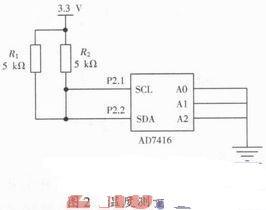
2.3 Humidity Measurement Module
The HS1101 capacitive humidity sensor is used for its high accuracy and stability. It measures relative humidity between 1% and 100% RH with an accuracy of ±2%. The sensor’s capacitance changes with humidity, and this change is detected through a 555 timer-based circuit. The resulting frequency is converted into humidity values by the microcontroller. This method is both efficient and reliable for real-time monitoring.
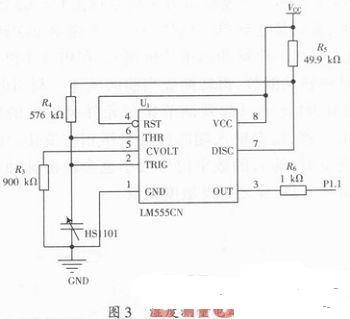
2.4 Air Pressure Measurement Module
The MPX4115 pressure sensor from Motorola is used for its temperature compensation and wide measurement range (15–115 kPa). The output voltage is proportional to the applied pressure, and after being divided by resistors, it is fed into the microcontroller’s ADC. The system then calculates the actual pressure using a predefined formula. This ensures accurate and stable readings under varying atmospheric conditions.
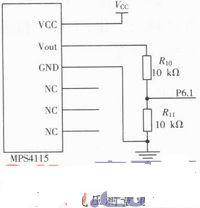
2.5 Wind Speed Measurement Module
The CS3144 Hall effect sensor is used to detect wind speed. A magnet is attached to a three-cup anemometer, and each rotation generates a pulse. The microcontroller counts these pulses to determine wind speed. A LM393 comparator adjusts sensitivity, allowing users to fine-tune the system for different environments. This setup ensures accurate and responsive wind speed detection.
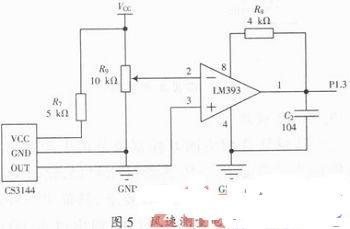
2.6 Wind Direction Measurement Module
A photoelectric encoder (CHA3806) is used to measure wind direction. It outputs two signals (A and B) that are 90° out of phase. By analyzing the phase relationship, the microcontroller determines whether the wind is rotating clockwise or counterclockwise. This information is then converted into a directional reading, displayed on the LCD, and stored for later retrieval. The system supports 360° wind direction with high precision and reliability.
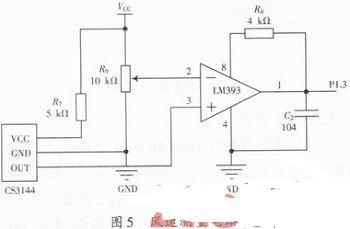
2.7 Human Interface Module
The system includes a 6-button keypad for user interaction, supporting functions like observation, query, storage, and automatic measurement. The 12864 LCD provides real-time data display, with a low power consumption of about 10 mA when backlit. For energy savings, the backlight turns off during automatic measurements, reducing overall power usage and extending battery life.
2.8 Other Hardware Modules
Power Supply: The system runs on a 5V lithium battery, regulated down to 3.3V using an LM1117 voltage regulator. Clock Module: The DS1302 real-time clock chip provides accurate timekeeping with minimal power consumption. E2PROM Module: An AT24C256 EEPROM is used for data storage, offering 32 KB of space via I2C communication. These components ensure the system is fully functional, reliable, and suitable for long-term deployment in the field.
Non Standard Power Supplies,400W Server Power Supply,250W Non Standard Power Supply,180W Switching Power Supply
Boluo Xurong Electronics Co., Ltd. , https://www.greenleaf-pc.com